
I love teaching fractions. But, for years, I noticed students weren’t fully grasping big fraction concepts. Throughout that time, I sought to find and create fraction activities (thanks, trial and error) that support student growth in all the foundational subskills we need to teach during our fraction units. No matter the difficulty.
It is no wonder why many of us struggle with how to teach fractions. Over the span of second and third grade, students need to learn:
- unit fractions
- fractions through a whole
- fractions on a number line
- equivalent fractions
- comparing fractions
- mixed fractions
- improper fractions
Throughout that time, you’ll have a range of students, all working at different stages of understanding. That’s why it is crucial that you have a wide selection of differentiated fractions activities to meet individual needs.
I’ve shared many of these tips and tricks with you over the past few years via this blog. However, I know that sometimes it’s hard to dig through content to find just what you need. That’s why today’s blog post breaks down fractions into subskills and subconcepts. I’ll share insight and links to dive deeper into topics that meet your needs.
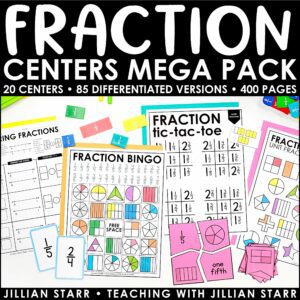
Fraction Centers Mega Pack
Fraction Activities to Teach Unit Fractions
Teaching unit fractions to third graders can be a doozy. Unit fractions, while seemingly straightforward, are actually abstract concepts. What are we really asking students to construct and understand? Numerical representations of parts that can vary greatly in size and shape.
Hands-On Practice is Key
I found that hands-on fraction activities are the keystone to understanding abstract concepts such as unit fractions.
Fraction Quilts is my go-to hands-on activity for unit fractions. And, like clockwork, they quickly become a classroom favorite.
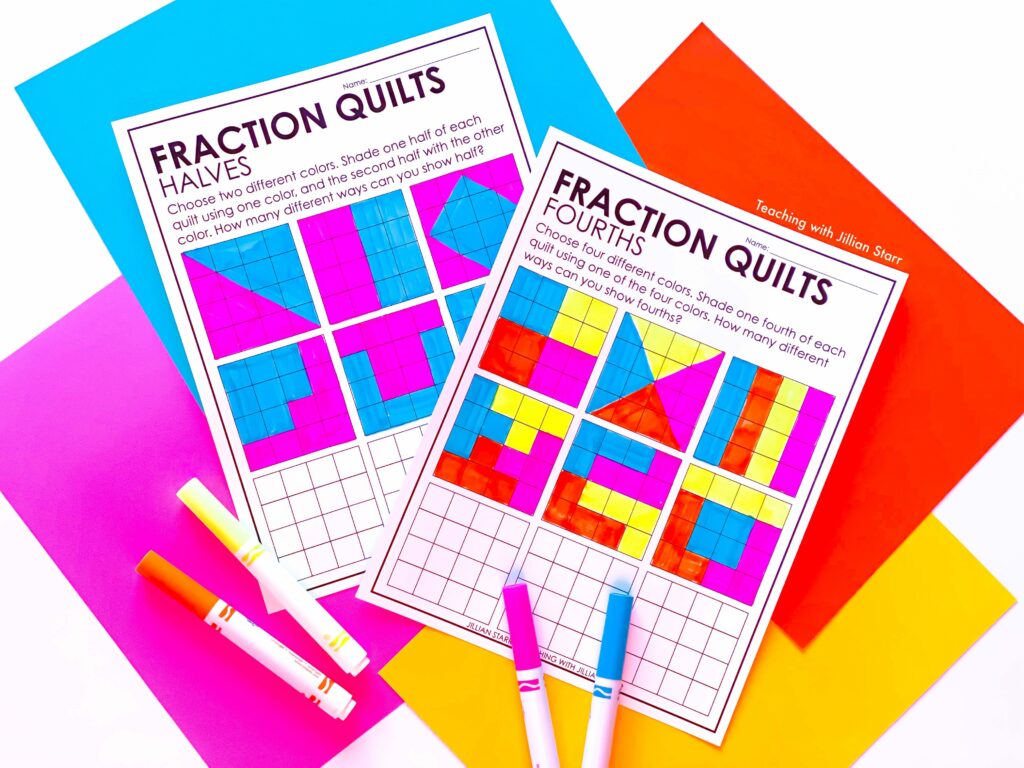

Working as a whole group or in small groups, I slowly introduce different ways of partitioning graph paper quilts. First, we begin with halves and fourths. Then, we move on to work with thirds, fifths, and sixths. Kids have fun and develop stronger understandings.
It’s All About Repetition
When teaching unit fractions, students need repeated exposure and practice.
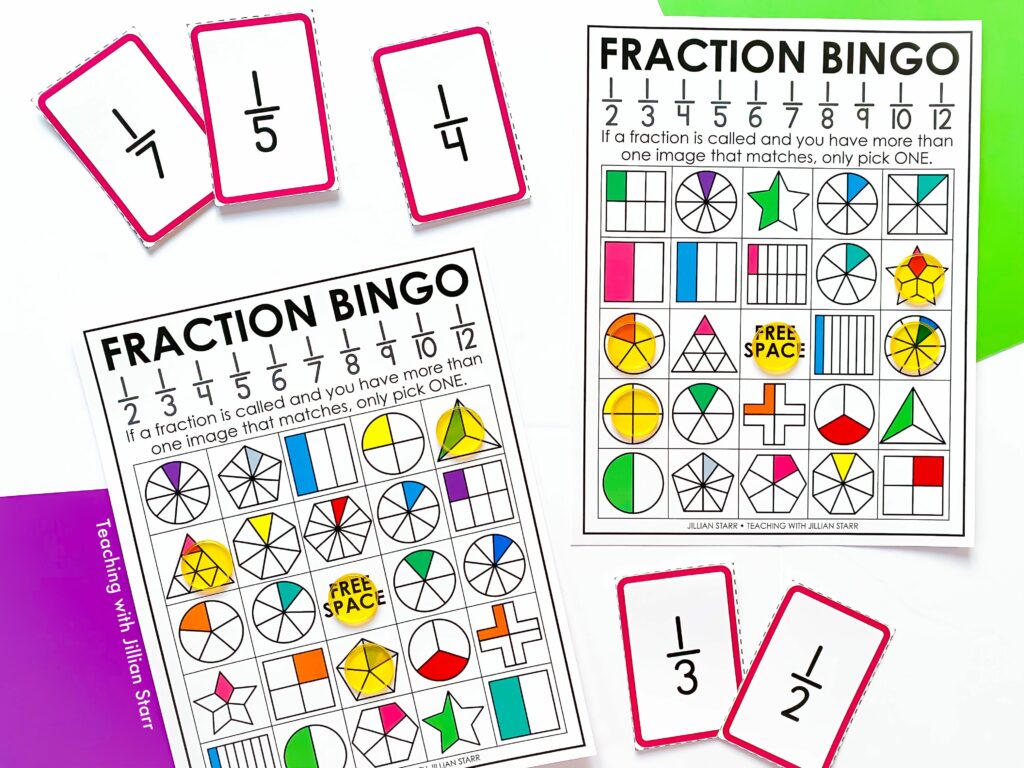

Fraction activities that can be played over and over again are best for this. Unit Fraction Bingo is an all-time classroom favorite. Students simply cannot get enough! When repetition is the need, student buy-in couldn’t be more necessary.
Want to learn more? Check out this post completely devoted to Unit Fractions
Fraction Activities to Teach Through One Whole
The jump from unit fractions to understanding fractions through one whole can be really challenging. When I first began teaching fractions through one whole, I knew I needed fraction activities that illuminated their existence in the “real world.”
Make Personal and Real World Connections
The best activities are those that stick with you for a lifetime. That’s why I always come back to those that stayed with me since I was in elementary school. The activity Fraction Names hooks students and helps them see that fractions go beyond numerical symbols. Better yet? This activity bridges unit fractions and parts of a whole.


In this activity, students write their names and partition them into parts by letter. For example, Jillian is eight letters (eight parts). Then, they analyze their names: How many letters are in your name? What unit fraction does each letter represent? What fraction of my name are consonants? What fraction of my name are vowels?
Don’t Forget Manipulatives
Students must see and feel how a whole can be split into equal parts to grasp the idea that parts make up a whole. Make A Whole is a great activity that incorporates manipulatives as a scaffold. These fraction tiles are a must for any classroom working on fractions through one whole!
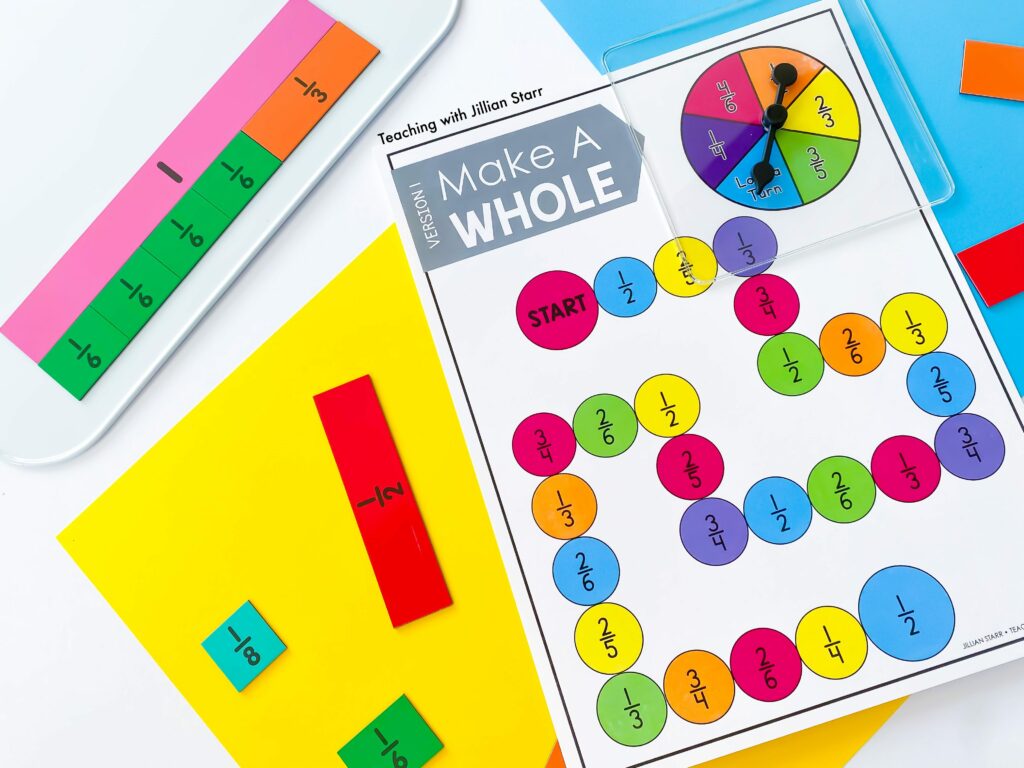

Want to learn more about how to teach fractions through one whole? Check out this post completely dedicated to Fractions through One Whole!
Fraction Activities to Teach Equivalent Fractions
I’ve said it before, and I’ll say it again: equivalent fractions can be MIND-BLOWING for students. The idea that two numbers can represent the same amount? That’s an entirely new idea and one they’ve never seen before in math class.
Let Students Explore!
Students get hooked on equivalent fractions pretty quickly. That’s why my number one approach to this unit is exploration. Rolling Equivalent Fractions is one of my favorite fraction activities. It allows students to make their own equivalencies with the guidance of visual supports.
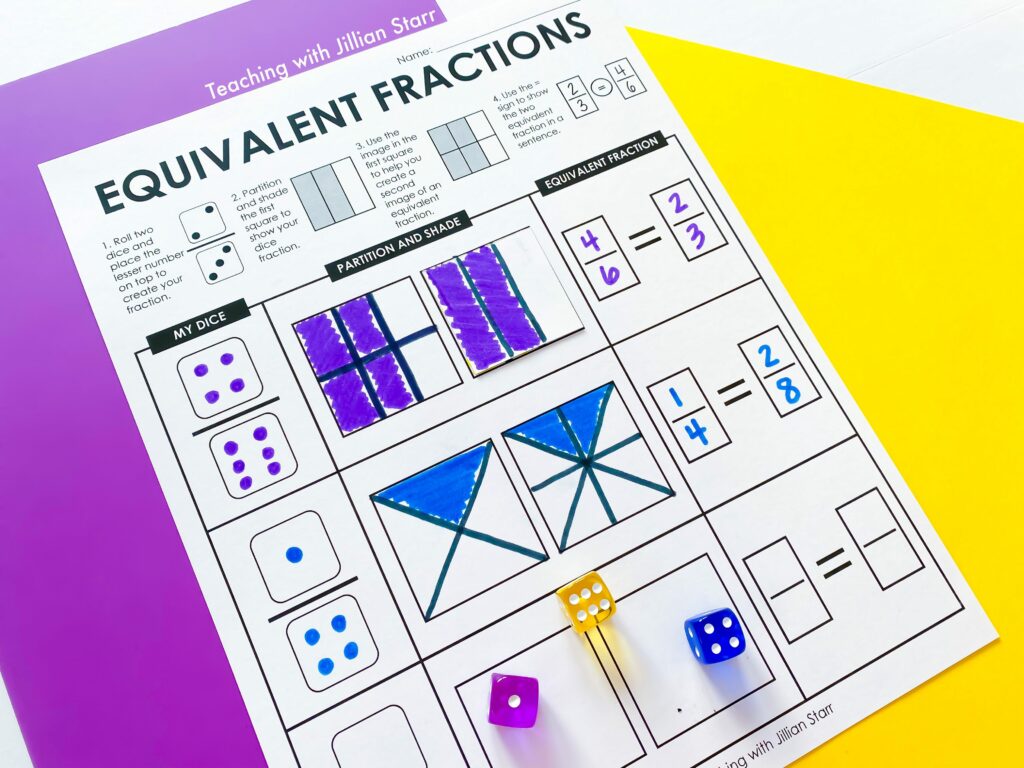

Students roll dice to create an initial fraction. Then, they are tasked with the challenge of creating a different yet equal fraction. They must either add or remove a partition. The scaffolding helps students stay focused while they get to play with adding and removing parts.
Equivalent Fractions Require Critical Thinking
As I look for and create fraction activities to support equivalent fractions in second and third grade, I’m also thinking about WHY this is a foundational concept and where it takes students later on.
It isn’t always simple knowing how to teach fractions for later transfer. Enter: Magic Squares.
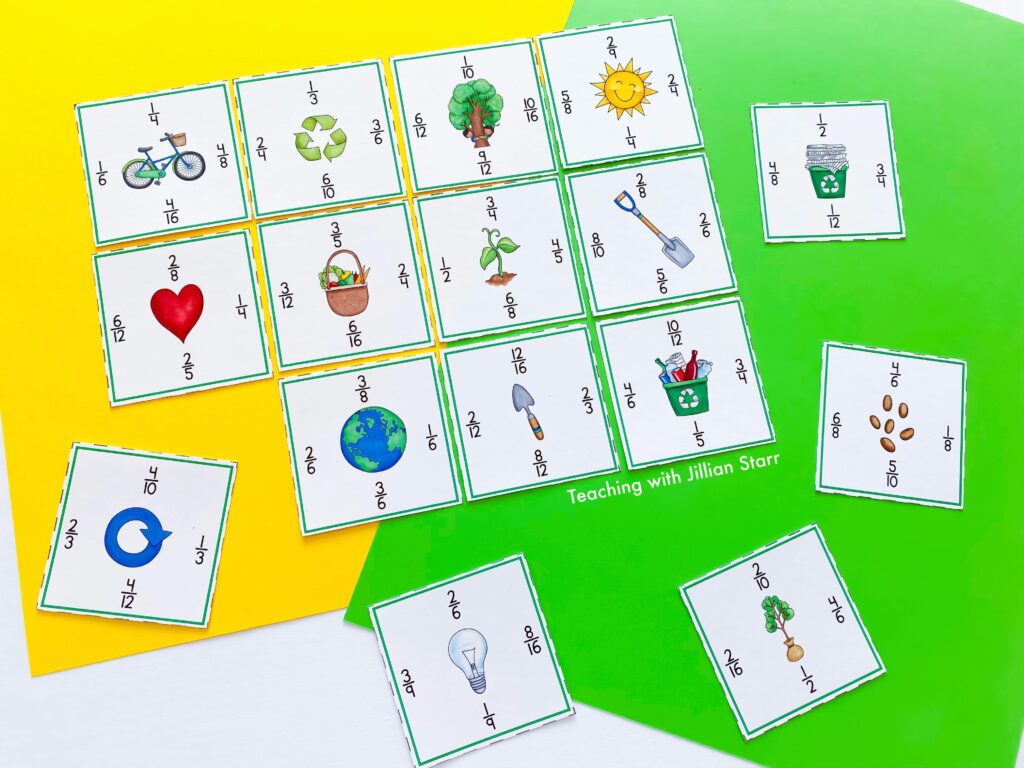

Magic Squares logic puzzles challenge students to apply what they understand about equivalent fractions. Once students construct a solid foundational understanding of equivalent fractions, they need to go beyond activities that ask for repetition.
Want to learn more about how to teach fractions and equivalent fractions? Check out this entire post about Equivalent Fractions!
Fraction Activities to Teach Fractions on a Number Line
Here’s the thing about teaching fractions: Once you think students have mastered a concept, they are introduced to a new one that seems like nothing they’ve learned before. Fractions on a number line are no exception.




Fraction Centers Mega Pack
In my experience, effective fraction activities that incorporate number lines were hard to come by. Trial and error, once again, was my motto for years. Because this concept is such a crucial pillar of fractional understanding for students, I ended up making many of my own number line fraction activities.
Visual, Hands-On Fraction Activities
Number lines are visual tools. So, it makes sense to say the fraction activities that support this concept need to include and use that tool.
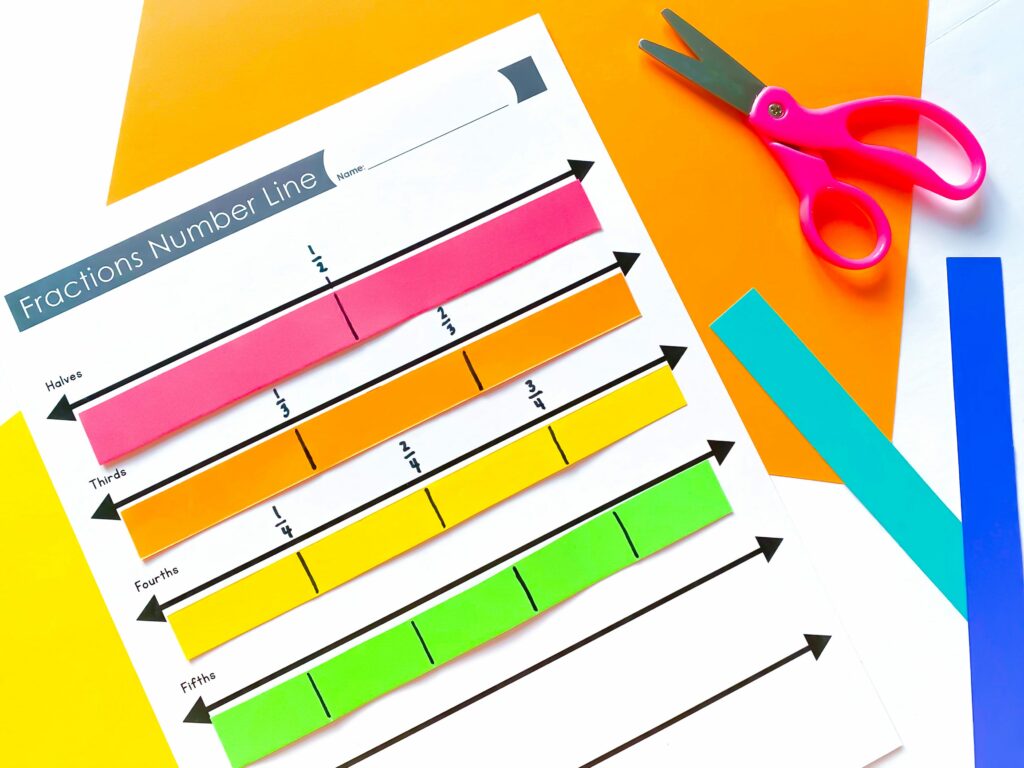

Fraction Bars is an activity that provides hands-on experience immediately after I introduce fractions on a number line. It is one of the simplest fraction activities in my rotation, as well as one of the most effective.
For this activity, I cut pieces of colored paper to the length of the number lines. After passing out several colors to each student, we start to fold. We practice folding in half and lining up our paper strips (fraction bar models) with the number lines, labeling them with marks as we go. We progress through thirds, fourths, and fifths. we discuss strategies and observations.
Activities that Connect Visual and Numerical Representations
Number Line Clip Cards helped demystify many fractional misconceptions in my classroom. My students often confuse the number of tick marks between two whole numbers on a number line. Does this ever happen in your classroom, too? They would see three tick marks between the whole numbers and assume they were working with thirds rather than fourths.
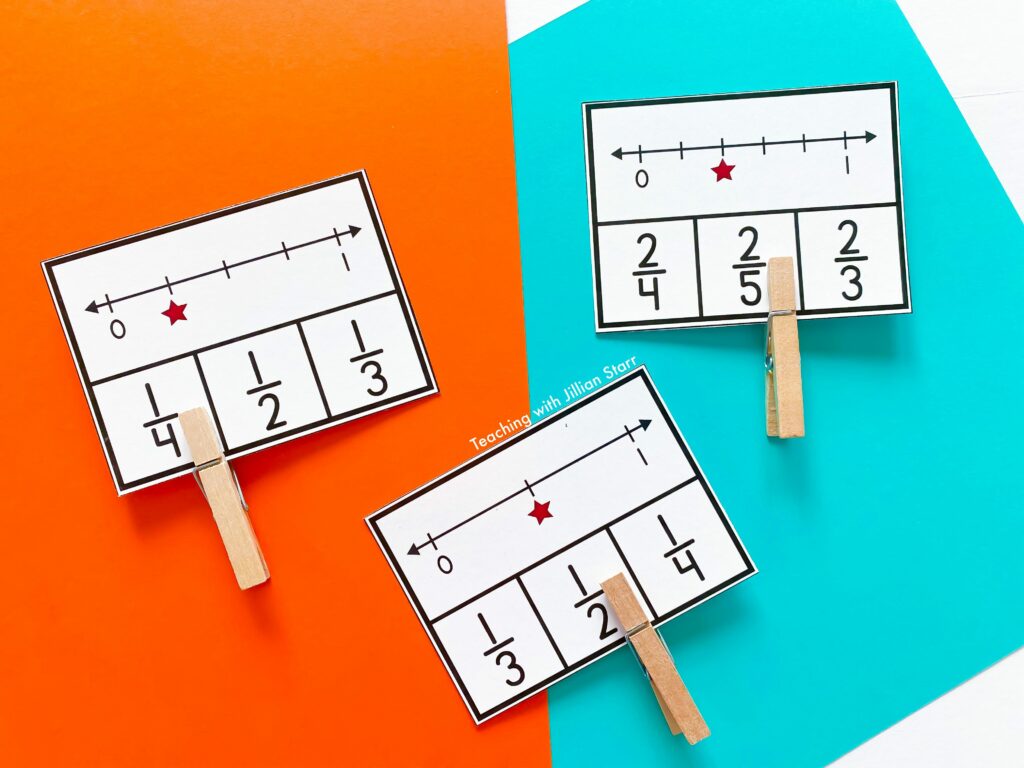

That’s why I made Number Line Clip Cards. Fraction activities support students’ internalization of this concept. Often used in small, guided groups, these clip cards allowed me to quickly correct those misunderstandings.
You can find more suggestions and fraction activities for teaching fractions of a number line here.
Fraction Activities to Teach Comparing Fractions
Comparing fractions activities must include one key factor: language. A huge part of teaching students how to compare fractions is the language we use to identify differences and comparisons.
Number Talks
Number Talks are incredibly effective when teaching almost any new math skill or concept. In addition to building a stronger mathematical community, they help students develop communication skills around mathematical thinking. Likewise, they provide ample opportunity for students to use new mathematical language.
Number talks about “real world” subjects are an amazing way to engage students in fraction comparisons. One of my favorite topics: art!
Artists such as Mondrian and Malevich make for excellent conversation starters and provide many possibilities for discussion around fractions.
Scaffolding
Once students build a foundational knowledge of fraction comparison and the language around it, they need fraction activities that scaffold independent exploration.
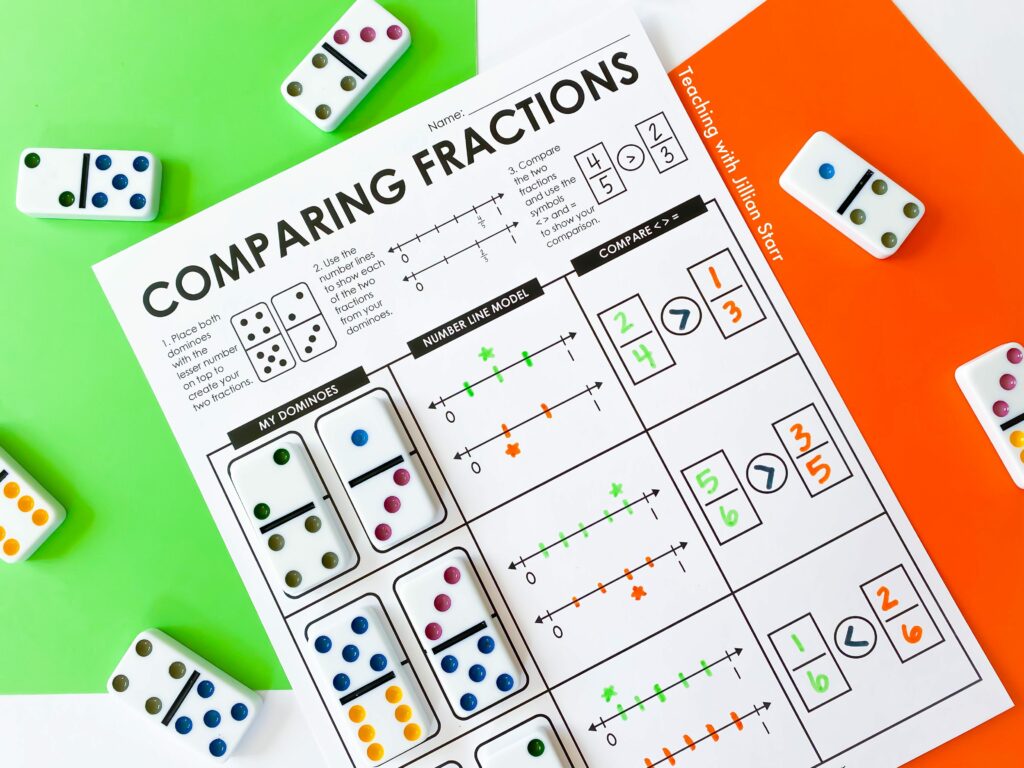

These Domino fraction activities support students with visuals and language. There are two versions:
- Students partition and shade shapes to match given fractions (using dominoes to dice). Concrete visuals help students to decipher which fraction is greater than the other and then write a comparison sentence.
- Students use a number line. Many of my students have struggled with fractions on a number line. I always try to do this one second. That way, they are already familiar with the idea and the activity itself. Their only focus at this point: the number line.
You can find more suggestions and FREEBIES for comparing fractions activities here.
Fraction Activities to Teach Mixed and Improper Fractions
Before students learn to rewrite improper fractions into mixed numbers, they need to engage in fraction activities that build conceptual understanding. When I begin this subunit, I start by introducing improper fractions and allowing students to get used to what they look like. They need to observe and build their own understanding of two concepts:
- Improper fractions are greater than one whole
- The numerator is greater than the denominator




Fraction Centers Mega Pack
Explicit Discussion and Guided Exploration
Those who have read my post on improper fraction activities know that Fraction Post-It Notes are my absolute favorite way to start this unit.
We begin by using Fraction Post-It Notes in whole or small groups. I give each student a post-it note that halves. Then, I write 1/2 on the board and ask them to shade in that fraction on their post-it note.
Next, I write 2/2 on the board. I ask, “What do you think this fraction would look like shaded?” Typically, students are excited to announce that it would be the entire square.
Finally, I write 3/2 on the board. This is when I start to correct misconceptions. I ask, “How do we say this fraction?” Confused students might say, “two-thirds.” When I hear that response, I show the difference between two-thirds and three-halves on the board.
After correcting misunderstandings, I ask students to show me what 3/2 looks like on their post-its. Of all the fraction activities, this one gets the most *creative* responses. Eventually, some students will realize that they need a second post-it note. I hope for two things as we enter into a discussion about this very different-looking fraction:
- At least one or two students notice and call out, “It is just 1 1/2!”
- Students respond with, “They are the same amount, just written differently.”
Repetitive Games
After our long discussion, students will continue to need fraction activities that provide ample repetition and exposure.
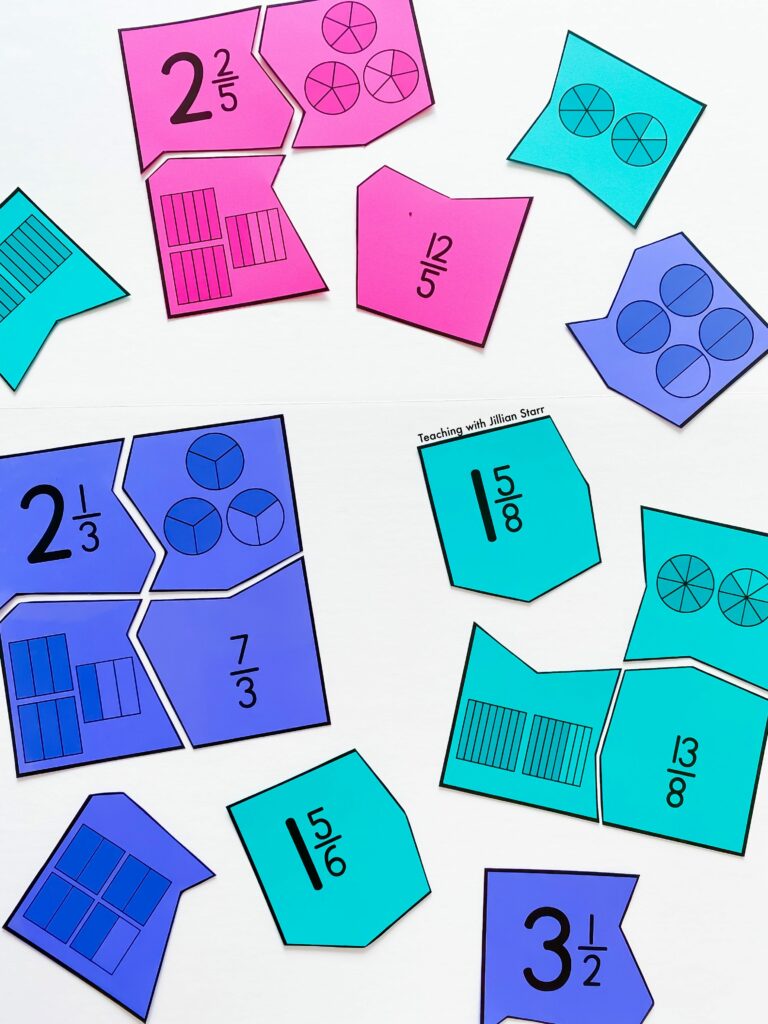

Mixed Number and Improper Fraction Number Puzzles are my GO-TO. They provide great visuals for students to connect improper fractions to mixed numbers. I love that they offer two visual examples that allow students to scaffold their understanding independently.
You can find more suggestions for improper fraction activities.
I’ve covered a lot about fractions over the past few years. However, that doesn’t mean I’ve answered all of your burning questions. Have another question? Please let me know! I’d love to hear about those sticky spots and help you (and others) work through them.

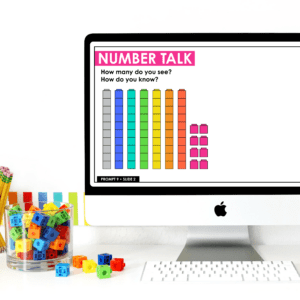
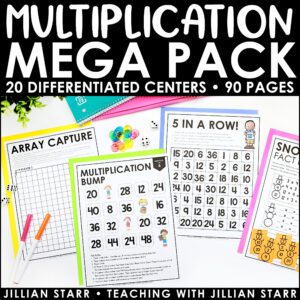
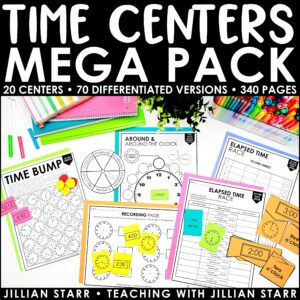
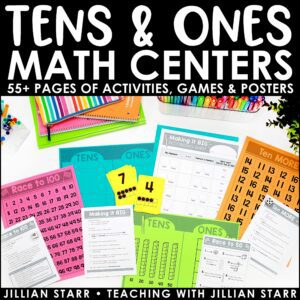
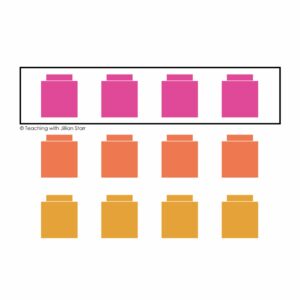
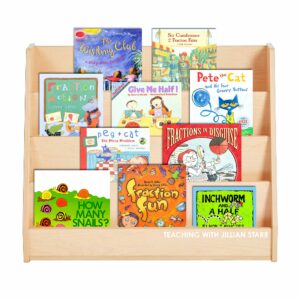



Leave a Comment